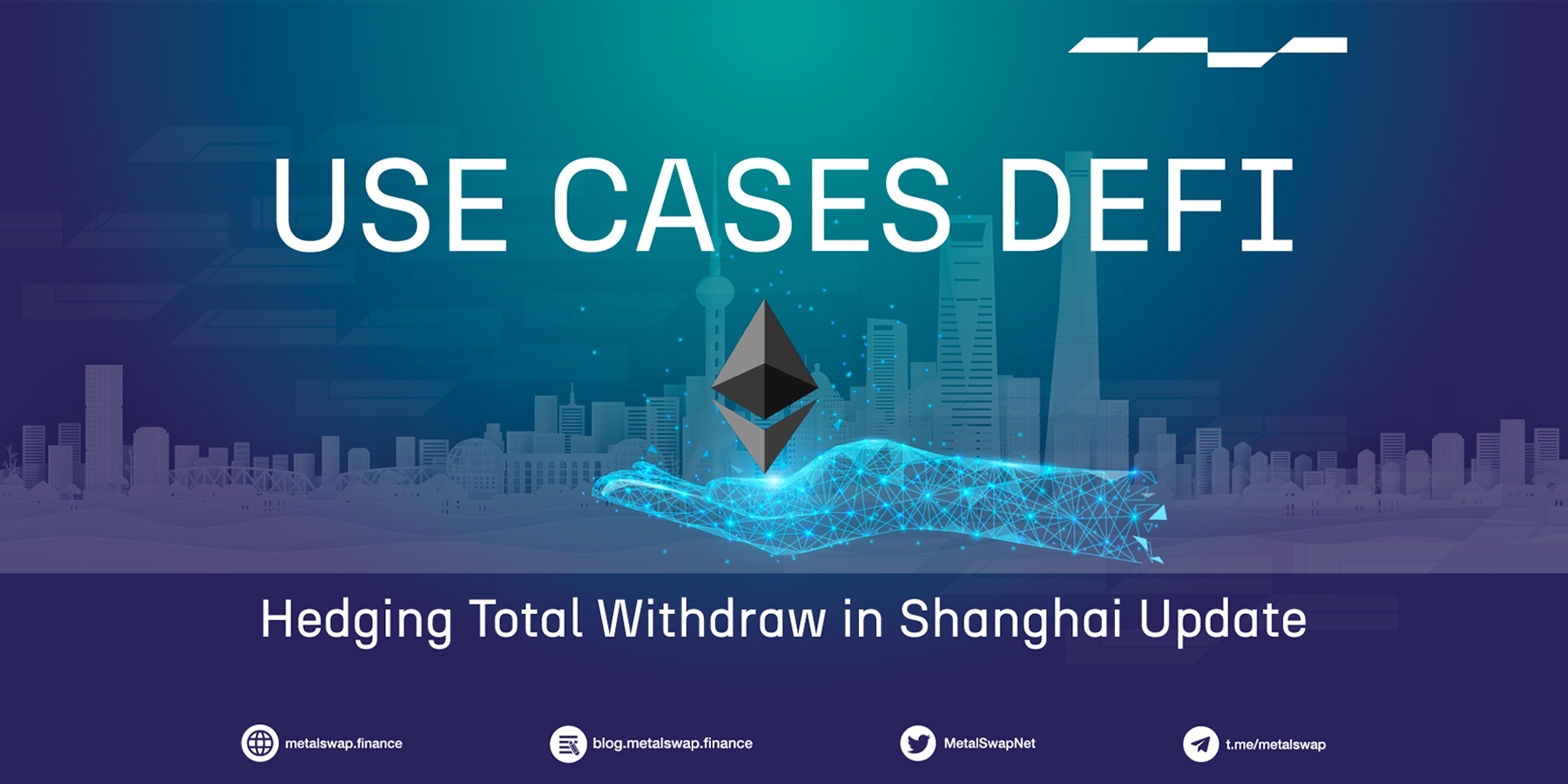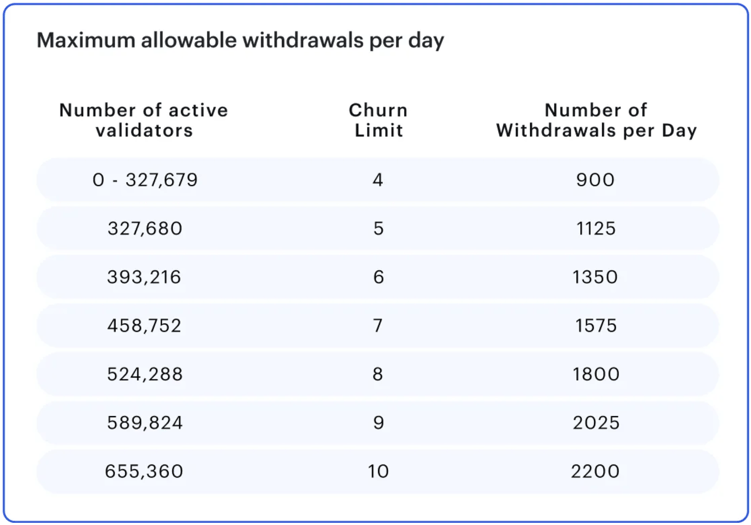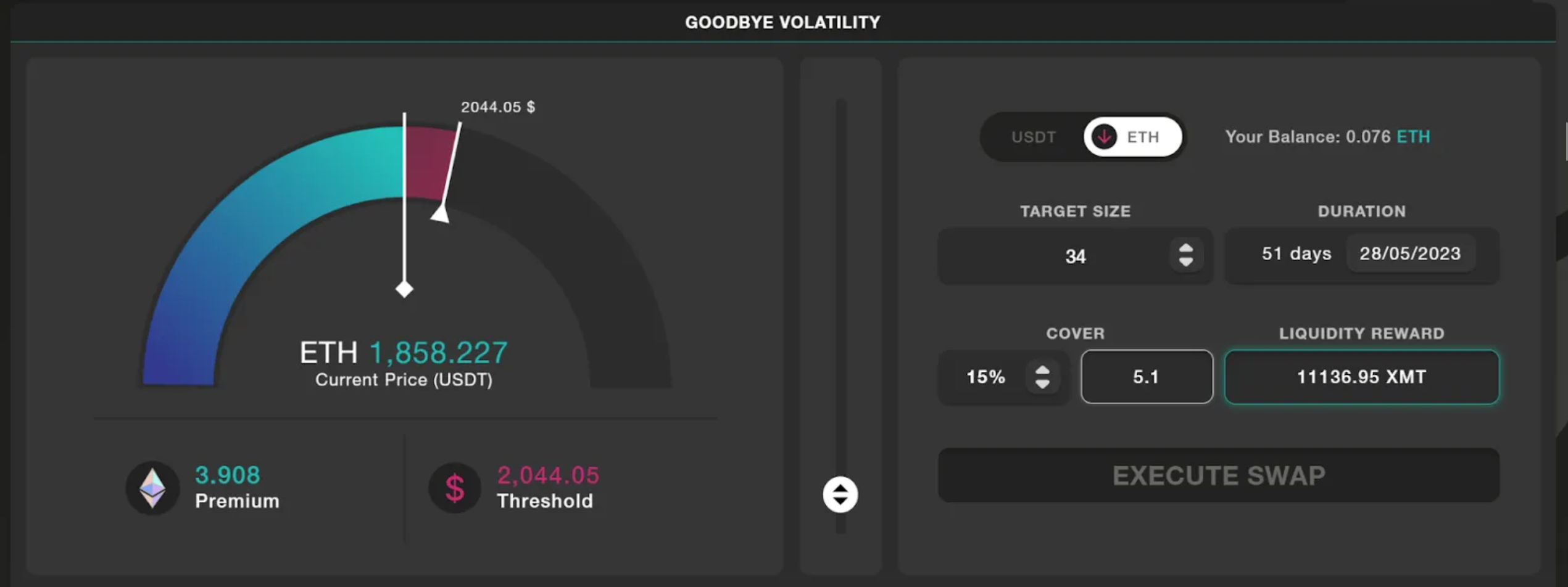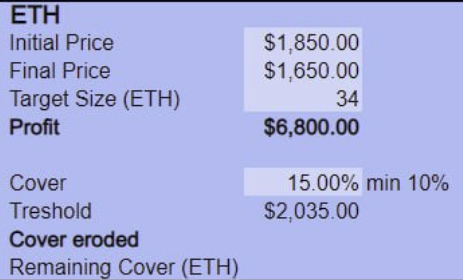 Total Withdrawals Post-Shanghai Update:
Total Withdrawals Post-Shanghai Update:
Navigating Validator Exits and Risk Management with MetalSwap
Following our previous articles on the Shanghai and Capella update, and introduced the concept of partial withdrawals on the second step, we now delve into total withdrawals. This feature gives to validators the ability to get back their entire staked ETH balance upon exiting the validator role.
In this article, we will explore the Total withdrawal process, its impact on validator earnings, and how Hedging Swap services like MetalSwap can manage risks associated with market volatility.
Understanding Total Withdrawals
Total withdrawals involve the recovery of an 'exited' validator's entire balance. This process occurs automatically for validators with a 0x01 withdrawal credential and has exited. The total withdrawal period comprises the validator exit process and the full withdrawal process. Hypothetically, a complete withdrawal should take a minimum of 28 hours, but most will take longer due to various factors.

Processing Time and Steps
The Total withdrawal process consists of several steps:
An active validator with a 0x01 withdrawal credential proposes and certifies blocks.
- The validator's private key signs a voluntary exit (VE), which is sent to the Ethereum Consensus Layer (CL) via a CL client.
- A maximum of 16 VEs are processed per slot (every 12 seconds).
- After the VE is processed and a minimum delay of five epochs (32 minutes), the validator's status updates from active to outgoing, entering the exit queue.
- After processing through the exit queue, the validator's status updates from exiting to exited, ceasing block validation.
A minimum delay of 256 epochs (27.3 hours) occurs before the validator's status updates from exited to withdrawable.
- Finally, the withdrawable validator undergoes the same automated 'scan' that processes partial withdrawals, and its balance is withdrawn.

Managing Risk with MetalSwap
Facing uncertainties surrounding market reactions to total withdrawals, validators can manage risk using MetalSwap. Consider a validator who staked 32 ETH and decides to exit. Assuming no slashing penalties for bad behavior, the validator will withdraw around 34 ETH. The total exit process requires more time and steps: changing the node key from BLS 0x00 to Execution Layer 0x01 (2-5 days), managing the exit queue (51 days in our example), and waiting for the balance withdrawal (7 days).
To protect against market volatility, the validator opts to hedge their position using MetalSwap. They choose coverage for the entire exit process, targeting a size of 34 ETH and a Cover of 15% of their choosing.

- If the ETH price increases, the validator benefits from the asset's appreciation at the expense of a Premium paid to Open the Hedging position and its cover (of 15%, hence 5,1 ETH) proportional erosion, with the possibility of resettling the swap position adding more Cover, instead of running the risk of the threshold being reached.
- In the ETH price strikes the threshold, the Open Swap goes liquidated.
- If the price of ETH decreases, MetalSwap covers the price gap on the whole 34 ETH Target Size.
For those curious about use cases, we have provided an embedded Google Sheet sandbox, where you can explore and experiment with different scenarios and parameters:
DISCLAIMER : This file is not official and was created by a community member to give a rough projection on the use of the Hedging Swap tool found on the site https://app.metalswap.finance/
It is therefore advisable to check and possibly report any errors in the official Metalswap chats to ensure that it can be improved by the community
Assuming the final price of ETH at the end of the 51 days will be 1650 USD, we may summarize this use case in the following way:

Conclusion
Total withdrawals post-Shanghai Update provide validators with flexibility and control over their assets. However, potential market volatility necessitates a strategic approach to risk management. Decentralized hedging swap instruments like MetalSwap offer an effective solution for navigating uncertainties, enabling validators to protect their digital assets and make informed decisions in the face of market fluctuations.
Incorporating tools like MetalSwap's Hedging Swaps into decision-making processes allows Ethereum validators to adapt to upcoming changes, manage challenges posed by increased market volatility, and safeguard their investments during the total withdrawal process. By referencing the insights from our previous articles Shanghai Overview and Partial Withdrawal, validators can be better prepared for the evolving Ethereum ecosystem.
To the MetalSwap
… and beyond!
⚠️Warning⚠️
❗ METALSWAP ‘s admins or moderators will NEVER contact you directly on any social under any kind of circumstances.
❗ Everything concerning $XMT ‘s smart contracts and addresses is shared by our official channels (list below), do not trust any different info from any different source.
Goodbye volatility!
- The DeFi Foundation
✎ What is MetalSwap?
With MetalSwap we enable hedging swap transactions through the use of Smart Contracts, AMM style.